Q
how to connect bluetooth proton persona
The JAECOO J7 marks the debut model from JAECOO, an emerging premium SUV brand under China's Chery Group. Positioned as a compact luxury SUV, it's squarely aimed at the young consumer demographic. Making its mark in the Malaysian market, this vehicle boasts sleek styling, advanced technological features, and solid value for money. Under the hood, you'll find a 1.6TGDI turbocharged engine, coupled with a 4WD system and intelligent driving assistance features.
Now, JAECOO might be a new name to many Malaysian buyers, but its parent company Chery already has a bit of a foothold in Southeast Asia. The arrival of the J7 should definitely enrich the local SUV options. One thing to note: Malaysia's tropical climate can be tough on cars, especially when it comes to cooling and air - conditioning. Fortunately, the JAECOO J7 has been specifically optimized for high - temperature environments – its sealing and cooling efficiency seem well - suited to local conditions.
It's gunning for the established Japanese - style and Korean - style SUVs in its class, but how it truly stacks up will depend on long - term market feedback. If you're curious, my suggestion is to head down to an authorized dealer, test - drive it, and see if its performance and features actually live up to what you're looking for.
Special Disclaimer: This content is published by users and does not represent the views or position of PCauto.
Related Q&A
Q
What is the fuel consumption of Persona 2019?
The fuel economy of the 2019 Proton Persona varies depending on driving conditions and transmission type. Official figures show that the 1.6L naturally aspirated engine paired with the CVT gearbox returns around 7.5L/100km in the city, drops to 5.8L/100km on the highway, and averages about 6.6L/100km combined – pretty efficient for a B-segment sedan. Real-world consumption can fluctuate based on driving habits, road conditions, and vehicle maintenance. Keeping tire pressure and engine condition in check through regular servicing helps optimize fuel efficiency. The Persona's Eco Drive assist system also gives dashboard prompts to help drivers develop fuel-saving habits. For even better mileage, avoid aggressive acceleration and maintain a steady speed. In Malaysia's hot weather, using the air conditioning appropriately will increase fuel use but is a necessary expense. It's also worth checking fuel economy numbers for rivals like the Honda City or Toyota Vios to make a well-rounded comparison when car shopping.
Q
What transmission is in the Proton Persona 2019?
The 2019 Proton Persona comes with a CVT gearbox built by Punch, model VT3. This transmission is known for its smooth shifting and fuel efficiency, making it perfect for city driving. Proton has done some local tuning on it to better suit Malaysian road conditions and driving styles. CVT tech delivers a more linear power delivery by using stepless gear changes, cutting down on the power interruptions you get with conventional autos and boosting overall drive comfort. You'll also find this same gearbox in other Proton models like the Iriz, showing the brand's strategy for powertrain commonality. For Malaysian buyers, the CVT's low maintenance costs and reliability make it a practical pick for daily use. Proton even backs the Persona's gearbox with a 5-year or 150,000 km warranty, which really helps build customer confidence. If you're after a more engaging drive, there's a 5-speed manual version too, but the CVT is still the top seller—especially handy in those stop-and-go city jams.
Q
What is the spec of the Proton Persona 2019?
The 2019 Proton Persona is a B-segment sedan that emphasizes practicality and value for money. It comes with a 1.6L naturally aspirated engine paired with either a 5-speed manual or CVT transmission, delivering a maximum output of 107 horsepower and a peak torque of 150 Nm. Fuel economy is decent, with around 7.5L/100km in urban driving. Measuring 4,383mm × 1,722mm × 1,554mm with a 2,555mm wheelbase, it offers reasonable rear legroom and a 436-liter trunk. Standard features include LED daytime running lights, a touchscreen infotainment system (with Bluetooth and USB connectivity), a reverse camera, and dual airbags (upgraded to six in higher trims). The Executive CVT variant adds extras like automatic air conditioning, leather seats, and Electronic Stability Control (ESC). Notably, the 2019 Persona borrows chassis tuning tech from the X70 platform, enhancing ride stability—handy for Malaysia's twisty roads. Local production also ensures easy access to parts and after-sales service, making it a solid pick for budget-conscious buyers seeking a reliable family car.
Q
What is the engine of Proton Persona 2023?
The 2023 Proton Persona is powered by a 1.6-liter naturally aspirated four-cylinder engine, codenamed 4AT. It cranks out 107 horsepower (80 kilowatts) and a peak torque of 150 Newton-meters, paired with a CVT automatic transmission that delivers smooth driving and decent fuel economy. This engine features dual overhead camshafts (DOHC) and a variable valve timing system (VVT), which optimize power delivery and fuel efficiency—perfect for city commuting and daily drives. As a top-selling model from Malaysia's homegrown brand, the Persona's engine is built with reliability and practicality in mind, tailored to local drivers' needs. While naturally aspirated engines might not match turbos in raw power, they shine with lower maintenance costs, making them a solid pick for budget-conscious buyers. In the Malaysian market, the Persona's engine setup offers strong value for the money compared to rivals in its price bracket, easily handling most families' driving requirements.
Q
What is the fuel consumption of Persona 2023?
The 2023 Proton Persona's fuel efficiency, according to official figures, comes in at around 6.0 liters per 100 kilometers on the combined cycle for models powered by the 1.6-liter naturally aspirated engine. Of course, real-world numbers can vary a bit depending on how you drive, the roads you take, and the specific specs of the car – generally, the manual transmission version tends to sip a little less fuel than the CVT-equipped one. As a popular sedan from Malaysia's homegrown brand, the Persona offers solid, well-rounded fuel economy for its class, making it a solid pick for daily city commutes and family use. It's worth keeping in mind that fuel efficiency isn't just about engine tech, though. Things like tire pressure, how often you blast the AC, and regular maintenance all play a big role too. So, if you want to get the best out of your Persona at the pumps, keeping up with good driving habits and sticking to scheduled servicing is key. And if fuel economy is a top priority for you, checking out Malaysia's Energy Efficiency Vehicle (EEV) certification is a smart move – it helps you quickly compare how efficient different models really are.
Q
What is the new Persona game 2023?
Regarding the question "What is the new Persona game 2023?", it's crucial to clarify first that "Persona" isn't a car - related product. Instead, it's the English name for the well - known video game series Persona. In 2023, the series released new titles like Persona 5 Tactica.
If you're looking for new car info in the Malaysian market, though, 2023 saw popular local models like the updated Proton Persona (not the game). This B - segment sedan gained popularity for its strong value - for - money and localized design, equipped with a 1.6L engine and upgraded safety features such as the ASA 3.0 system.
For car enthusiasts, Malaysia's market has recently focused on developing Energy Efficient Vehicles (EEVs), with models like the Perodua Myvi and Proton X50 offering hybrid options or small - displacement engines. The government has also rolled out tax exemption policies to encourage eco - friendly car purchases. We recommend keeping an eye on industry updates from the Malaysian Automotive Institute (MAI) or checking Proton and Perodua's official websites for new car test drive opportunities.
Q
What Segment is Proton Persona?
The Proton Persona belongs to the B-Segment category. B-Segment usually includes some compact-sized family sedans suitable for daily urban commuting. These types of vehicles generally have a moderate length and width, which makes it easy for them to maneuver through congested city traffic and park relatively easily. The Proton Persona has a length of 4366mm, a width of 1722mm, and a wheelbase of 2555mm. Such dimensional design conforms to the characteristics of B-Segment models. In Malaysia, there is a large market demand for B-Segment vehicles because they are economical and practical, meeting the travel needs of most families. Relying on the features of this segment of models, the Proton Persona holds a certain share in the Malaysian family sedan market, offering consumers an affordable and practical travel option.
Q
What is the Reslae Value of Proton Persona?
As a best - selling model of a Malaysian local brand, the Proton Persona shows a stable used - car resale value in the B - class sedan market. Depending on the vehicle age, condition, and configuration, the residual value of a 3 - year - old Proton Persona usually stays around 50% - 60%, while that of a 5 - year - old one is about 40%. This is closely related to its reliable powertrain (such as the 1.6L CamPro engine paired with a CVT gearbox), low maintenance costs, and extensive original - factory service network.
The key factors affecting its resale value include regular original - factory maintenance records, accident - free vehicle conditions, and popular configurations (such as HLA hill - start assist and a 7 - inch touchscreen). Moreover, the high market share also ensures good liquidity.
It's worth noting that Proton models have always been known for their cost - effectiveness. The demand for the Persona in the used - car market is mainly focused on the post - 2019 facelift versions, as they have optimized sound insulation and suspension comfort.
Q
How Many CC is Proton Persona?
The Proton Persona has a displacement of 1597 cc. CC (Cubic Centimeter) is equivalent to a cubic centimeter and is the same as a milliliter (mL). In the automotive field, it is used to represent the engine's displacement. All models of the Proton Persona are equipped with a 1.6 - liter displacement engine. The intake form is natural aspiration (NA), and the cylinder arrangement is an in - line 4 - cylinder. The engine's maximum horsepower is 109 PS, the maximum power is 80 kW, the maximum power speed is 5750 rpm, the maximum torque is 150 N·m, and the maximum torque speed is 4000 rpm. Such a power configuration can meet the needs of daily urban commuting and general road driving. Different versions of the models vary in terms of configuration, comfort, etc., but the core engine displacement remains the same.
Q
What is the Engine in Proton Persona?
Currently, the Proton Persona is equipped with a 1.6-liter naturally aspirated four-cylinder gasoline engine, codenamed CamPro IAFM+. This engine is independently developed by Proton. It has a maximum output power of 107 horsepower (about 80 kilowatts) and a torque of 150 Newton-meters. It is paired with either a 5-speed manual transmission or a CVT continuously variable transmission. The overall performance is smooth, and its fuel economy is suitable for daily driving.
The CamPro series of engines is one of Proton's signature technologies. The IAFM+ (Intelligent Air-Fuel Module with Variable Length Intake Manifold) technology enhances the low-speed torque performance by optimizing the intake efficiency, which meets the driving needs of the multi-urban road conditions in Malaysia. It's worth mentioning that since Proton collaborated with Geely in recent years, some new models have started to adopt turbocharging technology. However, as an economy car, the Persona still continues with the mature and stable naturally aspirated configuration. This setup is more attractive to local consumers in terms of maintenance cost and reliability.
If you have higher requirements for power, you can pay attention to Proton's models equipped with the 1.5TGDI turbocharged engine. Nevertheless, the Persona is more positioned towards practicality and cost-effectiveness, making it suitable for family users who focus on daily commuting.
Popular Cars
Model Year
Car Compare
Car Photo
Latest Q&A
Q
What is the most powerful 1.6 litre engine?
One of the most potent 1.6-liter engines on the market is the turbocharged four-cylinder you’ll find in certain high-performance models. Take the track-tuned variants, for example—they’re pushing over 300 horsepower. These engines typically pack direct injection, high-boost turbos, and lightweight materials to maximize performance without sacrificing fuel efficiency.
In more mainstream sporty models, 1.6T units can still deliver around 200 hp, with tech like variable valve timing and twin-scroll turbos improving low-end torque. That said, high-output small-displacement engines demand robust cooling and durability, so stick to regular maintenance and use the right spec oil.
If you’re eyeing mods, a 1.6T with a cast-iron block usually handles big power upgrades better than aluminum-block engines—just watch out for local emissions and noise regulations.
Q
What is 454 in liters?
The conversion of 454 cubic inches to liters is approximately 7.4 liters, which is a commonly used volumetric unit to describe large displacement engines, especially in American muscle cars or classic old cars. For example, some V8 engines in Chevrolet use this displacement. This type of large displacement engine typically provides ample low-speed torque, making it suitable for car owners who pursue acceleration performance and rich sound waves. However, the fuel consumption is relatively high, and the daily use cost will increase. With the popularization of turbocharging technology nowadays, small displacement engines can also achieve power output close to large displacement through turbocharging, while also having better fuel economy. This is also why large displacement naturally aspirated engines are gradually decreasing in the market. However, for enthusiasts who enjoy traditional American muscle cars or classic car modification culture, large displacement engines still have their unique charm, and it is difficult to completely replace both the sound wave and the linear feeling of power output.
Q
What is a 440 engine in liters?
The term "440 engine" typically refers to Chrysler's legendary 7.2-liter V8 powerhouse. This big-block mill dominated the muscle car and full-size sedan scene during the 1960s and '70s, famous for its tire-shredding low-end torque and that signature rumbling exhaust note. For those keeping metric scorecards, 440 cubic inches translates to roughly 7.2 liters of displacement - pure American muscle at its finest. You'd find these beasts under the hood of icons like the Dodge Charger and Plymouth Road Runner.
While modern engines chase fuel efficiency, there's still a cult following for these old-school naturally aspirated monsters. They deliver that addictive linear powerband and mechanical symphony no turbocharged four-banger can match. But here's the kicker - displacement isn't everything. Factors like bore/stroke ratio, compression, and airflow tuning mean today's tiny turbo engines can sometimes punch way above their weight class. Still, nothing replicates the visceral thrill of twisting that 440's throttle and feeling seven liters of Detroit iron come alive.
Q
What does 4.5 liter engine mean?
A 4.5-liter engine refers to a total displacement of 4.5 liters, meaning all its cylinders combine for a total working volume of 4,500 cubic centimeters. Generally, a larger displacement translates to stronger power output—more air and fuel can be drawn in each combustion cycle, generating greater horsepower and torque.
You’ll typically find these big-displacement engines in high-performance cars, luxury vehicles, or full-size SUVs, where they deliver ample power and smoother driving dynamics. The trade-off? Higher fuel consumption, which can mean steeper running costs, especially in regions with expensive gas. Maintenance also tends to be pricier, since they require more oil and more complex servicing.
With tightening emissions regulations, many automakers are shifting toward smaller turbocharged or hybrid setups that offer similar power with better efficiency. But for driving purists, nothing quite matches the linear power delivery and throaty roar of a big, naturally aspirated engine. It’s an experience that’s hard to replicate.
Q
What is a 1.6 L I4?
The 1.6L I4 refers to a 1.6-liter inline-four engine, where "L" stands for liters (a unit of volume) and "I4" indicates an inline-four layout—one of the most common engine configurations in family cars today. It strikes a solid balance between power output, fuel efficiency, and production costs, making it ideal for daily commuting and family use. You’ll find this setup everywhere, from Japanese and German models to domestic brands.
A naturally aspirated 1.6L typically delivers around 120 to 150 horsepower, while turbocharged versions (like the 1.6T) push performance further. The inline-four design is compact, easy to maintain, and smooth-running, which works great for front-wheel-drive layouts. For buyers on a budget who still want reliable power, the 1.6L I4 is a no-nonsense pick. Plus, it’s got decent tuning potential—enthusiasts often tweak the intake/exhaust or remap the ECU for extra kick.
View MoreRelated News

Proton Persona will be discontinued in 2026, with total sales exceeding 450,000 units
RobertDec 10, 2025
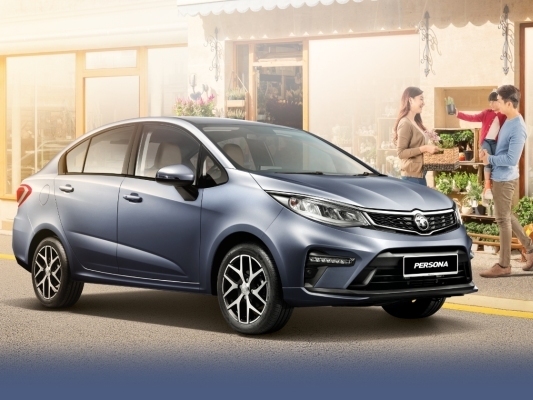
Proton Persona Interior Design Revealed: A High-Value B-Segment Sedan Interior Analysis
MichaelJul 21, 2025
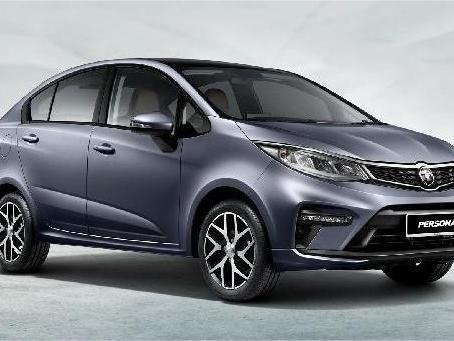
Proton Persona Review: Fuel-Efficient, Spacious City Sedan
JamesApr 8, 2025
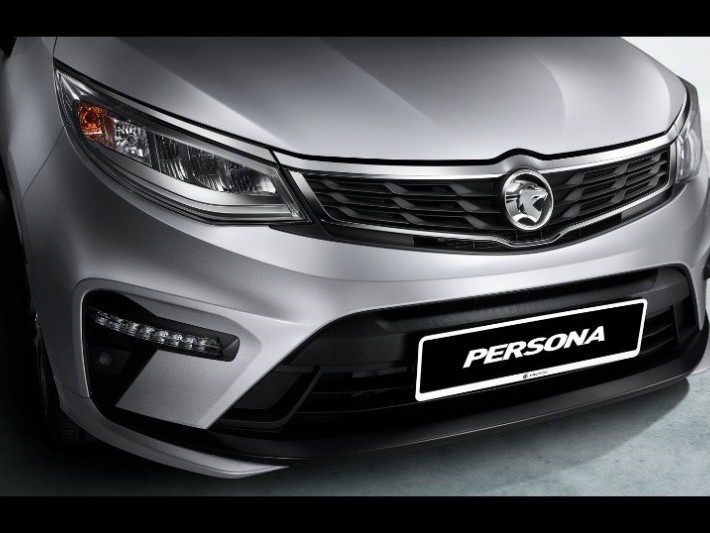
Considering buying a Proton Persona? Don't miss this fuel consumption guide!
LienOct 17, 2024
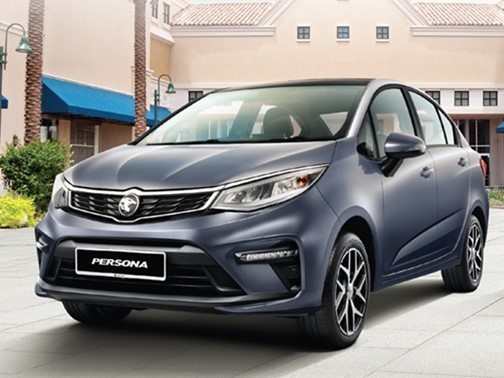
Proton Persona Buying Guide: Price, Configuration, How to Choose Between mid and high end models?
JamesOct 16, 2024
View More












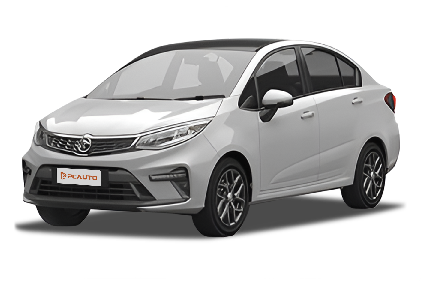



Pros
Cons